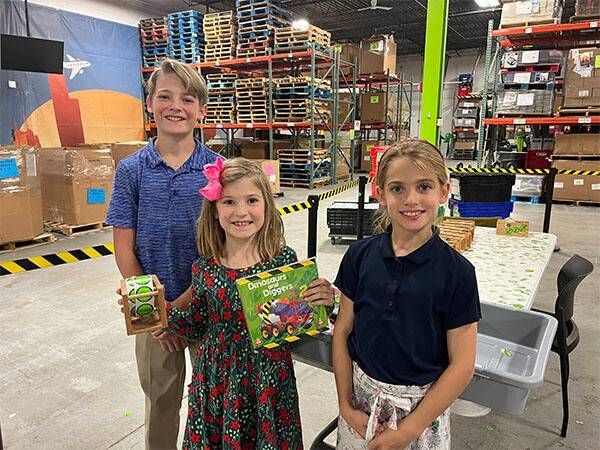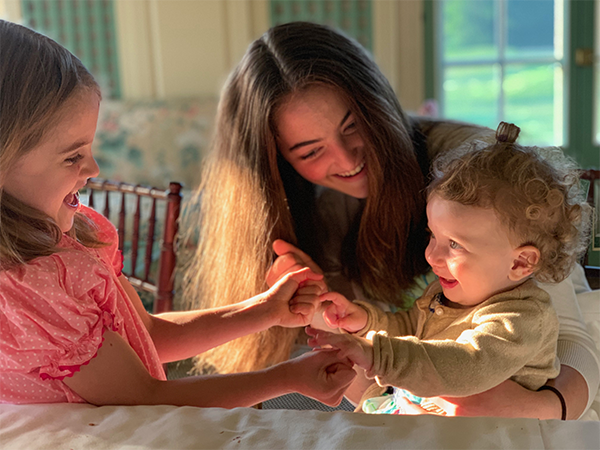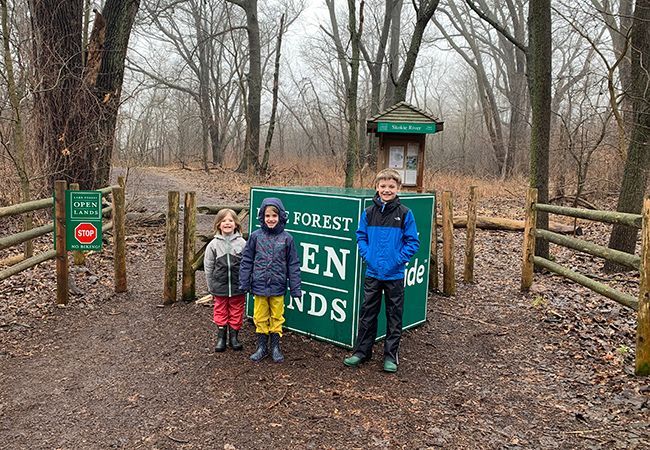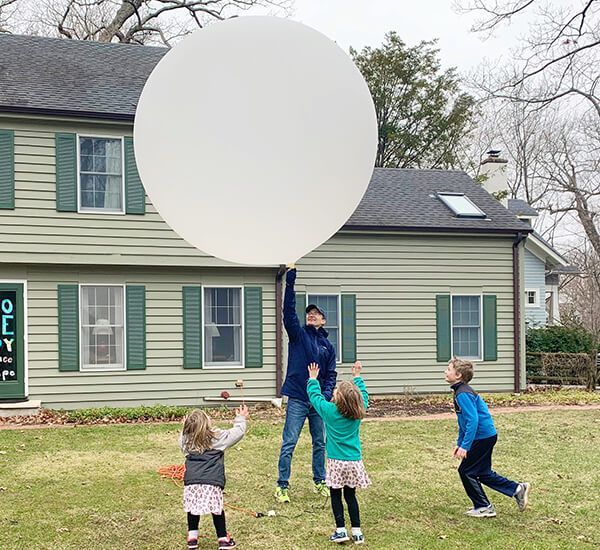Seasons & Holidays

The beginning of the year provides us with an opportunity to practice intentionality and thoughtfulness in our values. We can establish these qualities into our routines, carrying them through our experiences for the rest of the year. Martin Luther King Jr. Day is an inspiration for many families as they consider how they can contribute to their community with compassion and action. January is an invitation to families to think about other people and the needs of the world around us. Dr. Maria Montessori observed that humans are the only species who can imagine the lives of others and love people whom we have not even met. This capacity is unique to being human and is an important quality for us to encourage and nourish in ourselves and our children. Compassion and the ability to know how to help are two of the most important gifts we can give to humanity. A Montessori Perspective on Service There is no one-size-fits-all approach to community service with children. This concept does not belong only to Montessori, but it is a distinctive and persistent feature of the philosophy. A part of considering how best to find ways to volunteer with your children is by first understanding their phase of development. We know from Montessori’s observations that 0-6 year-olds do best with simple, hands-on activities that do not require prolonged efforts. 6-12 year-olds have a greater capacity for abstract work, and they are often motivated by social connection. 12-18 year-olds are ready for independence and deep engagement, and can understand more about why our world has the challenges that it has. Additionally, every parent must know the idiosyncrasies of each of their children—how much to expose them to in order to cultivate their compassion and desire to help without overwhelming them. Some children can handle witnessing more of the world’s pain and needs, while others will shut down. While this capacity tends to increase with age, it also is individual to each person. A parent can best support their children when they are observant and sensitive to their personalities. Talking About Service Parents need to be sensitive to what kind of language their children are ready for when discussing why other families and communities have greater needs for donations than others. For the youngest children, a simple explanation will suffice: “For some families, it is harder for them to pay for the food they need. We are so lucky that we have enough. We can help make their lives easier by giving them food so they don’t have to pay for it.” This kind of explanation works for a variety of services. Simply expressing that it is harder for other families and that your family is in a position to help creates the idea of a need for service without overwhelming their imaginations. Older children may be able to handle more information, but parents should proceed cautiously. Children have active imaginations and porous empathy. We want them to love the world and believe in the magnitude of its goodness before presenting the entirety of the world’s problems to them. For the most part, we have the privilege of allowing the children at our school to spend their childhood unjaded so that they develop the capacity for hope. A palpable sense of hope and a belief in how good the world can be will inspire selfless action as they mature. Ideas for Community Service Book, Food, or Clothing Bank These organizations all collect items such as books, food, or clothing and then distribute them to people, families, and communities who need them. Ask around your town or city to find one that has a simple donation strategy. Here in Lake Bluff, IL, where Forest Bluff School is located, Bernie’s Book Bank provides many opportunities for children of all ages to volunteer and contribute. The jobs at the facility range in simplicity. There are accessible tasks for young children, and there are more complex tasks for older children. The staff take the time to share stories about the families who are impacted by book donations, making the work feel meaningful. For banks that don’t offer volunteer opportunities, it is easy to organize a drive, or to gather items from your house with your family. Older children can design flyers and go door-to-door in their neighborhood, collecting items from other homes. Younger children can help put food, clothes, or books in bags or boxes. They can take part in determining what they are ready to part with from your own home. And they can all help bring the items to the organizations, witnessing the smiles of the staff members and the way that their work becomes a part of greater efforts. In all of these cases, it is important to gauge the capacity of each of your children. Parting with clothes they have outgrown is easier than parting with books that they may still love, even if they have technically outgrown them. And choosing food at the grocery store will be easier than parting with clothes. Nothing will be gained by forcing them to give things away that they are not ready to give away! If they are resisting identifying clothes or books that they do not need anymore, then leave the metaphorical door open for them: “I can see that you are still attached to your books. I love how much you love to read! I’ll check in another time to see if there are any that you are ready to give to another family.” For this child, they likely will be more receptive to a food bank. They can help you pick out their favorite kinds of canned or boxed food (or fresh food if your bank accommodates that), and then practice being generous in this way. Cookie, Lemonade, or Hot Chocolate Stand These kinds of stands tend to be more suited for older children, who can decide what items they will sell and help choose a charity or organization to donate proceeds to. Let them follow their passion and interest, and, to the extent that they can handle it, let them guide the research on what is important to them as they determine who to help. The children can make signs, set up the table, prepare the food or drink in the kitchen, and then be responsible for managing the sales. Make sure they know how to tell passersby what they are raising money for! Point out to them how much people love donating for a worthy cause. Pro tip: If you have Venmo or Zelle, you can print a QR code for people to use to buy goods. This will help them catch people who do not carry cash on them.

Children love family celebrations! Whether you celebrate Diwalli, Rosh Hashanah, Eid, or Christmas, our traditions and rituals are important ways that we pause to celebrate life. They are times to gather with others, share food, reflect with candlelight, perhaps sing or listen to music, dance, and tune in to our emotions. I say this last part because holiday family traditions, whether they be spiritual or not, evoke feelings of peace, joy, sorrow, memories, or some kind of emotion that can serve as a connection with others, with nature, with our creator or be a chance to check in with oneself as an individual. Involving our children of all ages in our holiday family traditions--or creating them anew as a family--is an important way to help our children create a sense of connection with others and meaning in their lives. These are opportunities to connect our children to all that is good in humanity.

Holidays offer opportunities to include children in the wonder and meaning of our cultural and religious traditions. By considering the significance of each holiday, and our children’s stage of development, we draw them into the celebrations in ways that are meaningful for them. We provide access points to these important days, inviting them to participate and build their own authentic understanding of why these holidays matter to us. While Dr. Maria Montessori was Catholic, her principles of child development are universal, and apply to the spiritual and communal life of all children. By understanding that the child’s capabilities progress from the concrete to the abstract, we can give children experiences that allow them to connect, as well as grow. Similarly, by encouraging their abilities each year, and showing them how to participate, they will begin to take on more and more ownership of their contributions to the holidays. It may be helpful to consider holidays through a number of entryways: Books and stories, food, decorations, service to others, and prayer or song. Of course there are many others! By identifying some of the ways that your children directly experience the holidays, you can invite them to participate and develop their own relationship to these days. Books and Stories Sharing books and stories with your children gives holidays context and depth. Here, they learn the history behind why we celebrate certain days, and they also see glimpses of how other people celebrate these same days. Arrange a special trip to the library that you take before each celebration, and invite your child to look at the books both with and without you. If the library is not a comprehensive resource for your holiday, then consider looking on-line ahead of time and requesting books through interlibrary loan, or purchasing them to have at your own home. You may want to start a collection of books for each holiday that only come out at that time of year. This keeps the words and pictures special. In our family, we have collected a basket of Christmas books, which address the history of the holiday, as well as stories that reflect the values of the season. We bring them out each November and put them under our tree. Even our oldest child, at age eleven, likes to sit by the tree each year, working his way through each book, relating to it differently as he grows, seeing different themes and appreciating different aspects. Your stories don’t need to be limited to books. The holidays are a beautiful time to share oral traditions. Tell stories about what you remember experiencing as a child at this time, or what your ancestors did to commemorate special days. A connection to their past adds to the richness of your child’s experience.

For those of us in the Midwest, June brings the beginning of summer. This means longer days, unstructured time, sunshine, green leaves, and flowers! Summer is so good for us after the gray skies of winter, but sometimes all that free time can create stress for families. What should we do with our unscheduled days?! What are some Montessori summer activities that children of all ages would enjoy? Summer provides many opportunities for getting outside and enjoying nature, and there is so much to do right in your own backyard. It can be tempting to fill every day with organized activities or to make grand plans for excursions, but remember that many of your children’s developmental and spiritual needs are met through the humble tasks of the home. Summer provides the time and space for this work, and allows them to ground themselves in the rhythms of outdoor activities. Dr. Maria Montessori recognized that children thrive when they engage in real work alongside adults. A younger child may need more support, while an older child can take on more responsibility and initiative. Think of your outdoor work in three categories: Gardening, Yard Work, and Animals. Then introduce these activities to your children so they can be busy in your own yard! Gardening Young Children’s Community (18 months–3 years): Find a small basket or bucket for your toddler to put bright red tomatoes and strawberries in. Show them how to pick the tiny leaves off herbs. When their fingers are stronger, demonstrate how to pinch lettuce leaves at the base. Primary (3–6 years old): Invite them to help you make labels for the garden. Younger children can color in the pictures of the vegetables, fruits, and herbs. Older children can help write the names. Check the garden each day to watch for the produce to grow right in front of the labels! Elementary (6–12): Elementary children can help plan your garden with a piece of paper and a ruler. Invite them to measure the space and translate the proportions to paper, and then label each section. The older they are, the more complicated this plan can be! Secondary (12–14): The oldest children can be involved in research to determine which plants will thrive in your region, where to place seedlings in the light and shade parts of your garden, and also how to place the plants so that they complement each other as they grow.

After a difficult spring, we have enjoyed a summer of relative normalcy and freedom in Illinois. While abiding by restrictions and safety measures, people gathered in outdoor spaces, children attended socially distanced camps, and we’ve all had the chance to swim, walk, run, and explore. This freedom has done a great deal for everyone’s mental health and happiness! Being together, being outside, and engaging in structured social activities has been an antidote for a difficult time. As we head into a winter of uncertainty, many parents and caregivers are looking for creative ways to continue to engage in the outdoor world, as well as bring inspired and open-ended activities into the warmth of their homes. Restrictions on museums, gyms, churches, and other normal places for gathering and exploring have created the time and opportunity for us to “make our own fun”! Here we share four Montessori-approved and inspired activities for this unusual winter. Build an Indoor Carnival Encourage your children to build an indoor carnival! They can make rides, games, and spectacles for family members to play with and explore. They can practice practical math skills by making tickets and awarding prizes. A cardboard box becomes a slide, and sofa pillows on the floor become a giant trampoline. The carnival may have a bean bag toss, bobbing for apples, or a petting zoo from stuffed animals (or pets!). As with all Montessori activities, the purpose here is for your children to engage in the bulk of the work and productivity. Your role is to inspire and support, and let their creativity and motivation do the rest. To this end, you can make the suggestion to create a carnival, but then see where your children’s unique creativity leads them. Only give as many suggestions as necessary to let their own enthusiasm take over!

